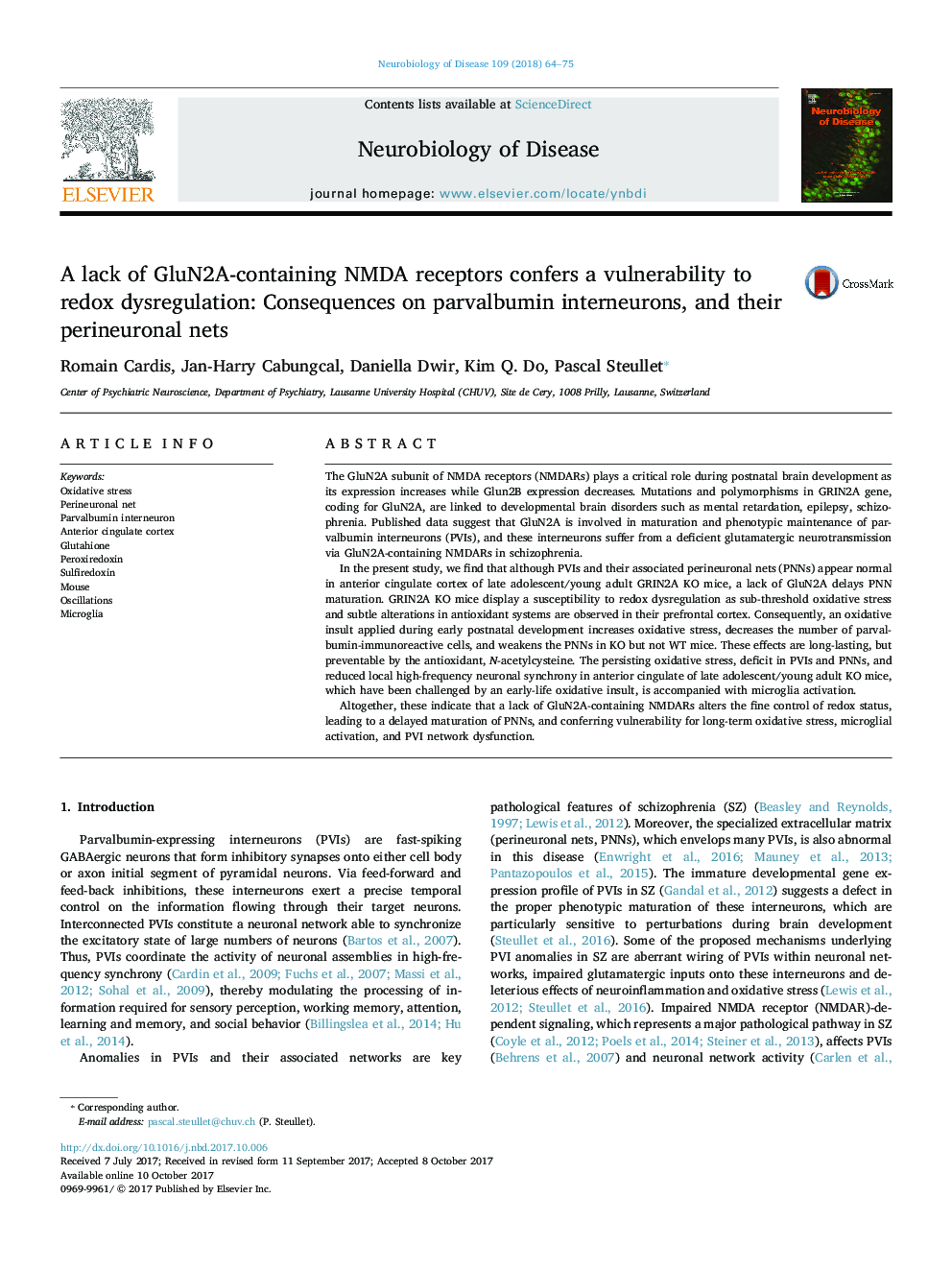| کد مقاله | کد نشریه | سال انتشار | مقاله انگلیسی | نسخه تمام متن |
|---|---|---|---|---|
| 5630494 | 1580612 | 2018 | 12 صفحه PDF | دانلود رایگان |

- GluN2A-containing NMDA receptors promote maturation of perineuronal net.
- GluN2A-containing NMDA receptors promote maturation of parvalbumin interneurons.
- GluN2A-containing NMDA receptors modulate expression of antioxidant systems.
- Absence of GluN2A causes a susceptibility to oxidative stress.
- Absence of GluN2A causes a susceptibility to microglia activation.
The GluN2A subunit of NMDA receptors (NMDARs) plays a critical role during postnatal brain development as its expression increases while Glun2B expression decreases. Mutations and polymorphisms in GRIN2A gene, coding for GluN2A, are linked to developmental brain disorders such as mental retardation, epilepsy, schizophrenia. Published data suggest that GluN2A is involved in maturation and phenotypic maintenance of parvalbumin interneurons (PVIs), and these interneurons suffer from a deficient glutamatergic neurotransmission via GluN2A-containing NMDARs in schizophrenia.In the present study, we find that although PVIs and their associated perineuronal nets (PNNs) appear normal in anterior cingulate cortex of late adolescent/young adult GRIN2A KO mice, a lack of GluN2A delays PNN maturation. GRIN2A KO mice display a susceptibility to redox dysregulation as sub-threshold oxidative stress and subtle alterations in antioxidant systems are observed in their prefrontal cortex. Consequently, an oxidative insult applied during early postnatal development increases oxidative stress, decreases the number of parvalbumin-immunoreactive cells, and weakens the PNNs in KO but not WT mice. These effects are long-lasting, but preventable by the antioxidant, N-acetylcysteine. The persisting oxidative stress, deficit in PVIs and PNNs, and reduced local high-frequency neuronal synchrony in anterior cingulate of late adolescent/young adult KO mice, which have been challenged by an early-life oxidative insult, is accompanied with microglia activation.Altogether, these indicate that a lack of GluN2A-containing NMDARs alters the fine control of redox status, leading to a delayed maturation of PNNs, and conferring vulnerability for long-term oxidative stress, microglial activation, and PVI network dysfunction.
Journal: Neurobiology of Disease - Volume 109, Part A, January 2018, Pages 64-75